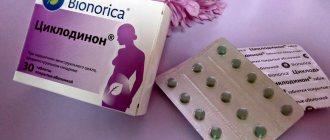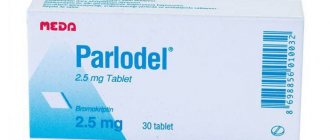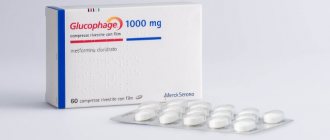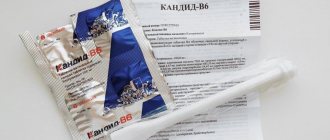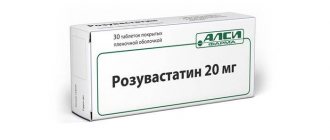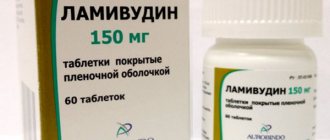Now more and more modern smokers are coming to the idea of quitting the deadly habit. But it is not so easy to forget about tobacco addiction, because it is a real disease, an addiction that forms on the mental and physical level. When giving up a cigarette, a person has to deal with nicotine withdrawal syndrome.
Not every person can withstand this condition, which occurs against the background of painfully unpleasant symptoms. What to do? Nicorette chewing gum comes to the rescue; reviews from smokers about this drug are overwhelmingly favorable. Let's find out more about her.
Nicorette chewing gum is an excellent helper in the fight against smoking
Nicotine replacement therapy
Nicorette is classified as NRT (nicotine replacement therapy). The essence of the action of such drugs is based on the supply of minimal doses of pure medical nicotine to the body . After all, smoking itself is formed against the background of persistent nicotine addiction.
When trying to quit cigarettes, a former smoker develops persistent withdrawal symptoms.
Nicorette, by supplying medical (pure) nicotine to the body, significantly alleviates withdrawal symptoms. Thanks to this remedy, nicotine withdrawal goes much smoother, without showing unpleasant symptoms, which include:
- severe insomnia;
- causeless anxiety;
- significant increase in appetite;
- unpredictable mood swings;
- irritability, and sometimes aggressiveness;
- painful and irresistible desire to smoke;
- pain of unknown etymology, felt in various parts of the body.
Also, the use of nicotine replacement gum helps smokers who are still hesitant to completely quit smoking. It has the power to significantly reduce the number of cigarettes smoked.
Before using Nicorette chewing gum, you should definitely read the instructions.
How NRT works
Medical nicotine from Nicorette chewing gum enters the body through active absorption through the oral mucosa, which is abundantly supplied with blood vessels. After 3-4 minutes, the pure nicotine supplement is already in the bloodstream and is distributed throughout the entire system .
The maximum concentration of nicotine in the body after consuming Nicorette reaches 30-40 minutes later. After 2-2.5 hours, the nicotine additive is broken down and eliminated from the body through the respiratory and urinary systems.
Nicotine introduced into the body using NRT, unlike the inhalation method (smoking), binds to the blood plasma in a minimal amount (this amount varies within 5%). Therefore, this supplement does not have a negative impact on health. Nicorette's responsibilities include the following:
- Significantly reduce the craving for smoking that is present in every heavy smoker.
- To eliminate as much as possible the discomfort that a person experiences when parting with cigarettes.
With the help of this chewing gum, a person quits smoking once and for all without any special consequences or painful inconveniences. Modern pharmaceuticals speak of Nicorette as one of the most popular and effective drugs related to NRT.
Release form
This drug is available in the form of small beige pads. They are based on a polymer of nicotine, which causes the characteristic odor. Each pad contains a small amount of it. Nicorette uses specific hydrocarbons as a forming base, for example, resin and wax, calcium carbonate. The percentage of excipients is small. It is represented by a specific fragrance, sorbitol, sodium carbonates.
According to the mechanism of pharmacological action, such chewing gum belongs to specific medicinal substances that are used in the treatment of chronic nicotine addiction.
How is Nicorette useful?
Each nicotine chewing gum contains a nicotine-polymer complex, which includes nicotine resinate with a concentration of pure nicotine of 2 and 4 mg . Manufacturers of the product have developed several types of chewing gum especially for people with different taste preferences. Currently on sale you can see the following types of Nicorette:
- "Fresh mint";
- "Fresh fruits";
- “Frosty mint” with a whitening effect.
Especially for lovers of different flavors, Nicorette chewing gum is available in various flavors.
Before arming yourself with a fragrant and effective product, you should know about some details of using chewing gum. These nuances are as follows:
- Nicorette chewing gum is sold in pharmacies and does not require a prescription. It is convenient and easy to use.
- The longer the smoking history and the greater the number of cigarettes smoked per day, the higher the dose of chewing gum consumed becomes.
- When using Nicorette, you should try to smoke as little as possible. Otherwise, a person may experience intoxication due to an excess of nicotine.
- This product has the power to prevent the addition of extra pounds. But it is precisely because of the fear of weight gain that many people do not even try to quit smoking.
- This medication helps whiten tooth enamel that has become yellow from smoking. By the way, it is not nicotine that gives yellowness to teeth, but the toxic compounds contained in tobacco smoke.
You should also know that absolutely all medications and therapeutic and prophylactic agents have not only advantages, but also disadvantages. Therefore, having decided to use Nicorette, you should study all the intricacies of its use. If you have even the slightest doubt, it is better to get a preliminary consultation with a doctor.
Contraindications
Despite its ease of use and accessibility, in some cases this tool is prohibited:
- An absolute contraindication is an allergy to nicotine or other components of chewing gum.
- Do not use the drug before reaching 18 years of age, as well as during pregnancy and breastfeeding.
- People with heart problems (especially those who have had a heart attack, stroke, bypass surgery, or smokers with stage 3 or 4 hypertension) should talk to their doctor before using this drug.
- This drug should be used with caution for liver diseases, kidney failure, gastritis, stomach and duodenal ulcers.
- Endocrine diseases (diabetes mellitus, hyperthyroidism, pheochromocytoma) are also a contraindication for the use of nicotine replacement therapy.
When should you not use Nicorette?
First of all, it is worth warning that people who have never dealt with smoking should not try this remedy . Do not forget that Nicorette is a medicinal product and not a regular chewing gum. It should not be used in the following cases:
- young age under 18 years;
- during pregnancy and lactation;
- after a heart attack, stroke;
- if a person has a tendency to allergies.
Nicorette should not be used after its expiration date. Be sure to purchase the product only at pharmacies. If you find that the packaging of the drug is damaged, you should not use such chewing gum either.
How to chew Nicorette correctly
If a smoker has certain diseases, you should definitely consult a doctor before using it. These are the following pathologies:
- gastrointestinal ulcer;
- hypertension;
- diabetes;
- liver and kidney diseases;
- pathologies of the thyroid gland;
- neoplasms in the adrenal glands;
- diseases associated with the functioning of the heart and blood vessels.
You should also use chewing gum with caution if you have dentures or bridges. This product, having a sticky consistency, can damage products. Therefore, in this case, preliminary consultation with a specialist is also necessary.
Negative consequences
Pure nicotine in some cases can provoke a number of unpleasant symptoms. If suddenly a person feels unwell while using this product, the use of the drug should be stopped and seek medical advice . Side effects of Nicorette chewing gum include the following symptoms:
- migraine;
- severe hiccups;
- dizziness;
- nausea leading to vomiting;
- insomnia and daytime sleepiness;
- neuralgia (muscle-jaw pain);
- formation of ulcers in the throat and mouth;
- allergic manifestations in the form of redness and itchy rashes.
additional information
Nicorette gum may not be suitable for people who wear dentures. It is possible after chewing gum to develop dysfunction of the gastrointestinal tract, but they usually go away after reducing the dosage of the drug and increasing the time between chewing. In this case, it is recommended to use chewing gum with a dosage of 2 milligrams. It is necessary to ensure that Nicorette is always at hand, especially when a person goes on the road.
To prevent environmental pollution, it is recommended to put the chewing gum in a bag after use and throw it in the trash.
Typically, the drug does not affect the ability to drive a car or perform actions that require accurate and quick reactions.
Chewing gum Nicorette: instructions for use
In order for this remedy to fully live up to its expectations and bring 100% success, it should be used strictly according to the instructions. Do not forget that this is not ordinary chewing gum, it must be chewed correctly:
- Place the chewing pad in your mouth. Chew it slowly until a slight tingling sensation appears.
- Then move the gum between your cheek and gums or under your tongue and hold it there until the tingling sensation completely disappears. On average it takes about 1-2 minutes.
- Once the effect wears off, continue chewing the pad until the tingling sensation returns.
- Again, place the gum under your tongue or near your cheek.
Thus, alternating, you should chew chewing gum until the tingling effect completely stops. On average it takes 30-40 minutes . Also, when using the drug, you must adhere to certain rules, namely:
- do not chew Nicorette while eating, this will reduce the effectiveness of the product;
- All drinks (juices, coffee, teas, water) must be drunk 15-20 minutes before chewing gum; drinks also negatively affect the final result.
How to choose the right dose of nicotine gum
Chewing gum should be chewed at a slow pace. This rule must be followed so that the pure nicotine compound is released and saturates the body gradually. Otherwise, too much saliva begins to be produced, which, along with nicotine, enters the stomach, which significantly reduces the effectiveness of the drug.
If, while chewing, Nicorette suddenly acquires a too sharp, repulsive taste, it means that it is being chewed faster than it should be. The pace needs to be slowed down.
Understanding the dosage
Nicorette is commercially available in two forms: 2 and 4 mg. It is necessary to select the required dosage based on the number of cigarettes smoked:
- if a smoker has previously consumed more than 20 cigarettes daily, he needs to use a dosage of 4 mg;
- in other cases, use Nicorette with a nicotine volume of 2 mg.
To calculate the daily number of pads you consume, you should take into account your own smoking habits. If a person is just starting to struggle with nicotine addiction, you can use 1-2 pads per hour (every time you want to smoke).
Over time, the amount of chewing gum should be gradually reduced, bringing it to 7-8 pieces per day (4 mg volume) or 10-12 pillows with nicotine inclusion of 2 mg. Remember that more than 24 pieces of the drug per day cannot be used to avoid overdose .
The course of nicotine replacement therapy with Nicorette has no restrictions. That is, the drug can be used until the craving for smoking is completely stopped. On average, this period is 2.5-3 months. Then you should gradually reduce the number of pads consumed in order to completely abandon Nicorette.
Cases of overdose
The risk of overdosing on Nicorette is extremely small. But it is theoretically possible, especially if you combine nicotine gum with additional NRT medications. The symptoms of a chewing gum overdose are as follows:
- headache;
- dizziness;
- nausea and vomiting;
- increased drowsiness;
- excessive salivation;
- gastrointestinal disorder (diarrhea);
- lethargy, apathetic state;
- pain in the peritoneal area.
When higher doses of pure nicotine enter the body, a person may experience a decrease in blood pressure and respiratory depression. In especially severe cases, lung collapse and convulsive syndrome develop.
Advantages and disadvantages of Nicorette
Overdose
The risk of overdose is small. This phenomenon is possible with complex therapy, when a person takes several medications at the same time.
Overdose symptoms:
- Abdominal pain
- Nausea accompanied by vomiting
- Diarrhea,
- Weakness, dizziness,
- Drowsiness,
- Reduced blood pressure,
- dyspnea,
- Collapse, convulsions.
If the above symptoms appear, you must stop using Nicorette chewing gum; it is recommended to take the victim to a medical facility.
In children under eighteen years of age, an overdose may also occur. In this case, the child must be admitted to a hospital for therapy.
Cost and analogues of the drug
You can purchase an effective remedy at any pharmacy. The price of Nicorette chewing gum varies and depends on the dosage of the nicotine supplement . On average, the cost of one package, which includes 30 pads with a nicotine volume of 2 mg, varies within 400 rubles. The same amount with a nicotine volume of 4 mg will cost 420 rubles.
In any case, this product pays for itself very quickly, taking into account the amount spent on cigarettes. And the cost of getting rid of a fatal addiction is completely irrelevant when it comes to your own health. What analogues of an effective fighter for clean lungs exist?
There are many brands of nicotine chewing gum. As for Russia, here you can only find a chewable representative of the NRT series of drugs only under the Nicorette brand. There is no point in trying to use existing analogues produced in Asian regions; this is fraught with various health risks; the products of these countries are not certified.
Other similar drugs in this category are also popular in foreign countries. For example:
- Nicogum;
- Nicotine Gum;
- Nicotex-2 and Nicotex-4;
- Habitrol-Nicotine Chewing Gum;
- Kwiknic-Nicotine Chewing Gum-Mint;
- Nicotinell Mint-Nicotine Chewing Gum.
Based on numerous favorable reviews from former smokers who successfully quit their deadly addiction with the help of this remedy, we can confidently speak about the actual effectiveness of Nicorette. This effective medicine, if used correctly, will become a reliable and proven assistant when parting with cigarettes.
Review of smokers' reviews
There are enough reviews about Nicorette chewing gum from both former smokers and those who continue to smoke.
Almost everyone complains about the taste and sharp sensations during use. Some, on the contrary, liked the taste. Now they don't know how to stop chewing lozenges. People managed to quit smoking within a week of taking it, or within a couple of months; in the future, they sometimes resort to using chewing gum when cravings arise.
Smokers with 8-20 years of experience give positive reviews, because they have long been accustomed to such taste sensations and do not notice them. It is mentioned more than once that you don’t want to take up cigarettes, you don’t feel like it, despite your once strong addiction. These are reviews from real, living people.
In negative reviews, there are different complaints about the drug: the craving for cigarettes has not gone away, it helps for a short time, chewing gum made you feel sick, the taste is disgusting, and the very idea of therapy is meaningless. This opinion has its place, because everyone has their own reasons for smoking and reasons to quit, and each body is individual. You should not buy an expensive medicine rashly just because you liked the advertisement.
Side effects
Adverse reactions that occur when using various forms of Nicorette are similar and are dose-dependent. Most side effects are observed during the first 3-4 weeks of therapy.
Sleep disturbances, headaches and dizziness may be symptoms of withdrawal symptoms associated with quitting smoking. There is also an increase in the incidence of aphthous stomatitis (the connection between these reactions and the use of Nicorette is not obvious).
During Nicorette therapy, the following disorders may develop:
- Central nervous system: often – dizziness, headache;
- Cardiovascular system: often – rapid heartbeat; rarely - atrial fibrillation;
- Digestive system: often – hiccups, gastrointestinal discomfort, nausea;
- Respiratory system: often – rhinitis, cough;
- Other: often - irritation of the oral mucosa, sore throat, dry throat.
When Nicorette is used externally, local reactions may develop, manifested in the form of moderate redness and itching.
Drug interactions
After quitting smoking you may experience:
- Increased activity of the CYP1A2 isoenzyme, which can lead to an increase in the concentration of certain drugs in the blood plasma (for example, theophylline, clozapine, tacrine, ropinirole);
- Increased concentrations of other drugs that are partially metabolized by the CYP1A2 isoenzyme (for example, imipramine, clomipramine, olanzapine, fluvoxamine).
Smoking may induce the metabolism of pentazocine and flecainide.

